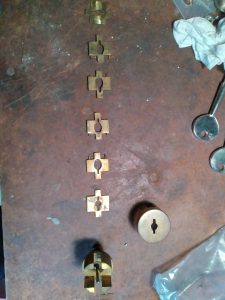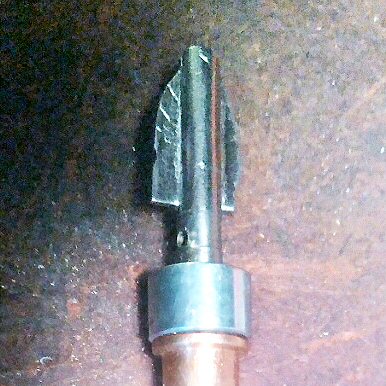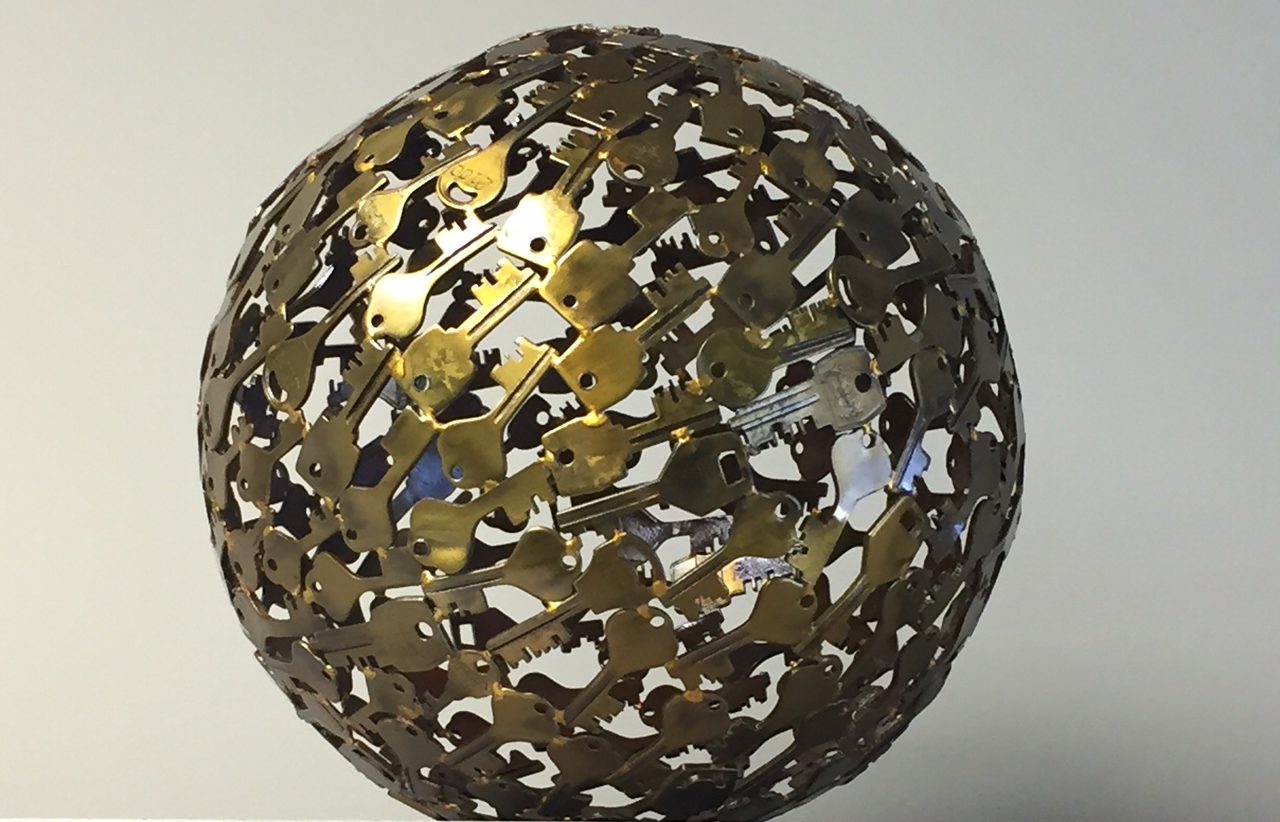The tabernacle key was lost. The ornate cast bronze doors could not be opened. Sister Kathleen, of Elevate St. Andrew Senior Living in Niles, called Anderson Lock.
Surely, you might reason, amongst the thousands of key blanks hanging on hooks above our front counter, we could cut a replacement key. However, without key codes, or an original key to copy, the lock would have to be removed, and completely taken apart, in order for a replacement key to be fabricated.
Nevertheless, to open the lock on what Sister Kathleen described as a “very beautiful and old tabernacle, which we Catholics believe holds the very presence of the Lord,” the senior living facility needed a new key.
Within Catholicism, Eastern Orthodoxy and in some traditions of Anglicanism and Lutheranism, the tabernacle is a box-like or dome-like receptacle for the exclusive reservation of the consecrated Eucharist. It is normally made from precious metals, stone or wood, and is lockable to prevent the consecrated elements within from being removed without authorization. The “reserved Eucharist” is secured there for distribution at services, for availability to bring Holy Communion to the sick, and, especially in the Western Church, as a focal point for reflection, meditation and prayer.
This one-of-a-kind artisan tabernacle featured two sets of mechanical doors, which the now lost key had opened in sequence, (see Chuck’s video below) revealing a white veil which could further conceal a Chalice and Bread of Life. The outer doors were secured with a wafer tumbler lock. This type of lock uses a set of flat wafers to prevent the lock from opening unless the correct key is inserted.
Historically, locksmiths constructed or repaired an entire lock, including its constituent parts. Although the fitting and replacement of keys remains an important part of locksmithing, modern locksmiths are primarily involved in the installation of high quality locksets and the design, implementation, and management of keying and key control systems.
Service Manager Jim Riddle knew just which one of our lock techs to ask to take on the Tabernacle Challenge. Chuck Mark, C.R.L., since he is the only member of the service team who became a Certified Registered Locksmith. Additionally, Chuck, who was raised in the Catholic religion, would respectfully remove the lock, disassemble it, and create a new key. For this special assignment, Chuck worked mainly in his own basement workshop.
 As can be seen in Chuck’s photo, at left, wafer tumbler locks contain several different shape brass wafers. A rectangular hole is cut into the center of each wafer; the vertical position of the holes in the wafers vary, so a key must have notches corresponding to the height of the hole in each wafer, so that each wafer is pulled in to the point where the wafer edges are flush with the plug, clearing the way for the plug to rotate in order to open the lock. If any wafer is insufficiently raised, or raised too high, the wafer edge will be in one of the grooves, blocking rotation. [Thanks to Wikipedia for this explanation.]
As can be seen in Chuck’s photo, at left, wafer tumbler locks contain several different shape brass wafers. A rectangular hole is cut into the center of each wafer; the vertical position of the holes in the wafers vary, so a key must have notches corresponding to the height of the hole in each wafer, so that each wafer is pulled in to the point where the wafer edges are flush with the plug, clearing the way for the plug to rotate in order to open the lock. If any wafer is insufficiently raised, or raised too high, the wafer edge will be in one of the grooves, blocking rotation. [Thanks to Wikipedia for this explanation.]

A typical key is a small piece of metal consisting of two parts: the bit or blade, which slides into the keyway of the lock and distinguishes between different keys, and the bow, which is left protruding so that torque can be applied by the user. In its simplest implementation, a key operates one lock, a Keyed Alike set of locks, or a lock/key system where each similarly keyed lock requires the same, unique key. Chuck created the key bit shown in the adjacent photo to operate the tabernacle lock, then created an ornate bow, from a large, decorative, round head brass key to match the Tabernacle’s unique design.
Sister Kathleen called Chuck a miracle worker! A Godsend! She wrote, “Thank you and your fine company for the expert and excellent work done on the lock and safe in our chapel.” She described our techs as “on time, professional, very respectful and caring. Special acknowledgement goes to Chuck for his very hard work and expertise in actually making a key… Chuck worked very hard on hot days and even at home to build a key, and never complained.”
Two short videos, below, show some of the work creating the key, and the mechanical doors being opened with the new key.



